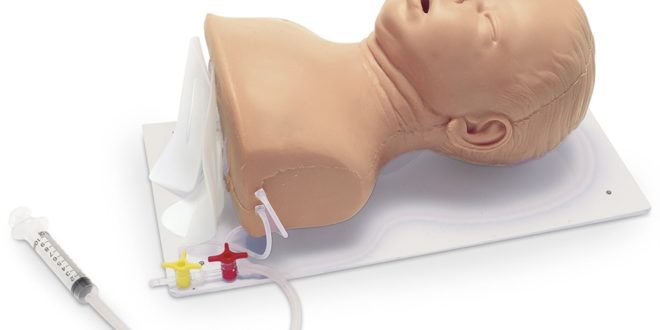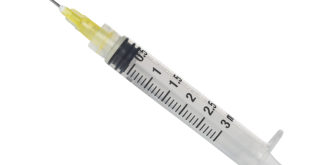Not too long ago, while on-call, I got a call that any anesthesiologist hopes to never get in the middle of the night.
It was a call from the ER physician, telling me about a 2 year old that was brought in to the emergency room with something stuck in the back of her throat. Thankfully, she wasn’t in any acute distress at the moment. Mom didn’t actually see what she put in her mouth, but she thought it might be a plastic bottle cap. The x-rays weren’t very helpful.
I went to assess the child in the emergency room as we all waited for the ENT surgeon to show up. I found a pleasant little girl, drooling a little bit, but not in any respiratory distress at that time.
I smiled at her and began to establish a friendly rapport from a distance. I called mom over and got her story about what she had observed and deduced from her child that night. I then got the rest of the medical history from the mother as well. Fortunately, she was an otherwise healthy girl.
I was fortunate enough to have another anesthesiologist “in-house” covering labor and delivery that night. I woke him up, relayed the relevant information, asked him for any advice on managing the case, and then asked him to stand by and assist me when we headed to the operating room.
One issue with kids this young is that you don’t have any IV access. Furthermore, agitating a child with something stuck in their airway could quickly escalate the situation into a completely blocked airway. Trying to obtain an IV “beforehand” was not the safest course of action in this situation.
After consulting with the ENT surgeon and my colleague, we decided that performing a mask, inhalational anesthesia induction would be the best course to take. At the same time, I wanted to keep this little girl as calm as possible prior to “going under”. To help do this, I gave mom a “bunny suit” and allowed her to come back to the operating room for the beginning part of the case. My colleague also mentioned that keeping the child entertained with an ipad or iphone children’s app would be a good idea.
So I quickly downloaded a free, children’s app on my iphone.
In no time, my iphone was streaming children’s cartoons.
I placed my iphone next to my little patient as mom accompanied us to the operating room. With mom beside her and watching a cute cartoon, I was able to place the girl under general anesthesia, using anesthesia gases, calmly and safely.
My nurse then escorted mom out of the operating room. It can be traumatic for parents to see the work that physicians have to do for their children in the operating room. Moreover, if the situation changed into a critical one (as was definitely possible in this scenario), having a mother “freak out” inside the operating room could hinder the team’s ability to care for the little girl.
We proceeded to place an IV to be able to quickly give any meds that may become necessary. After oxygenating her with 100% oxygen for several minutes, the ENT surgeon took a quick look inside her mouth.
He found the culprit–a brush bristle laying across the back of the little girl’s throat– and removed it. A scan of the rest of the throat found no other foreign bodies.
I then turned off the anesthesia gases and allowed her to regain consciousness. She was able to breathe on her own the whole time (spontaneously ventilate) and thankfully, the case was completed without any complications. We then watched her in the post anesthesia recovery area to make sure her breathing remained unaffected and that she recovered from the anesthetic in a normal fashion.
She was then discharged from the surgical area of the hospital with her mother.
I was thankful that a potentially dangerous situation in a little girl was averted without incident. And I think the iphone children’s app helped me keep the little girl distracted from a scary environment for her and also helped me build quick rapport with her as well.
I am excited that I am practicing medicine in a time when cheap and accessible technology can help improve (in small and big ways) my ability to take care of patients.
What do you think? Let me know in the comments below.
 Anesthesia Myths: Get the Facts, Lose the Fear | Your #1 Anesthesia Resource in Simple language
Anesthesia Myths: Get the Facts, Lose the Fear | Your #1 Anesthesia Resource in Simple language




